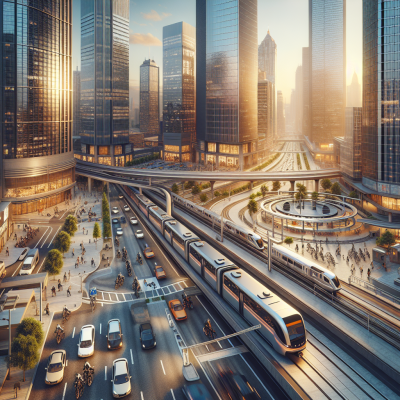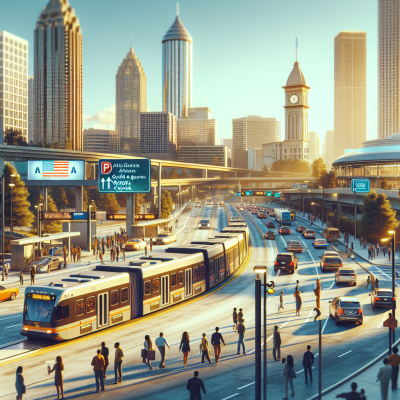
Road Infrastructure
Major Highways and Interstates
Atlanta's road infrastructure is a critical component of its transportation network, playing a pivotal role in the movement of people and goods throughout the region. The city is crisscrossed by several major highways and interstates, making it a transportation hub for the southeastern United States. Understanding these key transportation routes is essential for both residents and visitors.
Interstate 285 (The Perimeter)
Interstate 285, commonly known as The Perimeter, encircles Atlanta and serves as a crucial beltway that connects various parts of the city. Spanning approximately 64 miles, it provides access to several major interstates, including I-20, I-75, and I-85, essentially forming a loop around the metropolitan area.
The Perimeter is not only a vital thoroughfare for commuters but also a strategic route for freight transportation, given its connectivity to suburban areas and industrial centers. It's important to note that I-285 experiences significant traffic, especially during rush hours, as it acts as a boundary for urban sprawl and connects to many commercial districts and residential communities.
Interstate 75 and Interstate 85
Interstate 75 (I-75) and Interstate 85 (I-85) are major north-south corridors that run through Atlanta, intersecting in the downtown area known as the Downtown Connector. This convergence is one of the busiest stretches of interstate in the nation, often handling immense volumes of traffic as it channels vehicles in and out of the city.
I-75 extends from the Great Lakes to the southeastern United States, passing through Detroit, Cincinnati, and Tampa, among other cities, before reaching southern Florida. In Atlanta, I-75 is a critical artery for accessing the city's northern suburbs and continues southward toward Macon and the state of Florida.
I-85 begins at the Alabama border and traverses northeast toward the Carolinas, eventually connecting Atlanta with Charlotte, Richmond, and the mid-Atlantic region. Within the city, I-85 is essential for accessing northeastern suburbs and the Hartsfield-Jackson Atlanta International Airport.
Traffic Patterns and Congestion
Rush Hour Considerations
Atlanta is notorious for its traffic congestion, particularly during peak hours. Morning rush hour typically occurs between 6:30 AM and 9:30 AM, while the evening rush stretches from 4:00 PM to 7:00 PM. These timeframes see a significant increase in traffic flow, as commuters travel to and from work, leading to frequent slowdowns, especially on interstates 285, 75, and 85.
Given the extensive highway system, drivers often need to be strategic in their planning. Utilizing traffic apps and staying informed about real-time conditions can help navigate these challenges more effectively. Additionally, some commuters opt for alternative routes through surface streets or utilize public transportation to avoid the congestion of the primary interstates during these hours.
Atlanta's Spaghetti Junction
One of Atlanta's most notable traffic nodes is the junction of I-285 and I-85, known colloquially as the Spaghetti Junction. This interchange is named for its complex and intertwining network of ramps and overpasses, resembling a twisted pile of spaghetti from above. It is a vital interchange that facilitates the movement between the Perimeter and the northeast corridor of I-85.
The Spaghetti Junction is a marvel of engineering, designed to manage high volumes of traffic with minimal disruption. However, due to its intricate design and heavy usage, it remains a focal point for congestion. Drivers should be prepared for potential delays, particularly during peak periods when the interchange handles upwards of 300,000 vehicles daily. Enhanced navigation systems and updated GPS technologies are often employed by commuters to successfully negotiate this complex section of Atlanta's highway system.
In summary, Atlanta's road infrastructure, with its major highways and interstates, plays a crucial role in facilitating movement across the city and beyond. While offering significant connectivity, these routes also present challenges with congestion, particularly during rush hours and at busy interchanges like the Spaghetti Junction. Understanding these elements is key to effectively navigating the traffic patterns in and around Atlanta.








